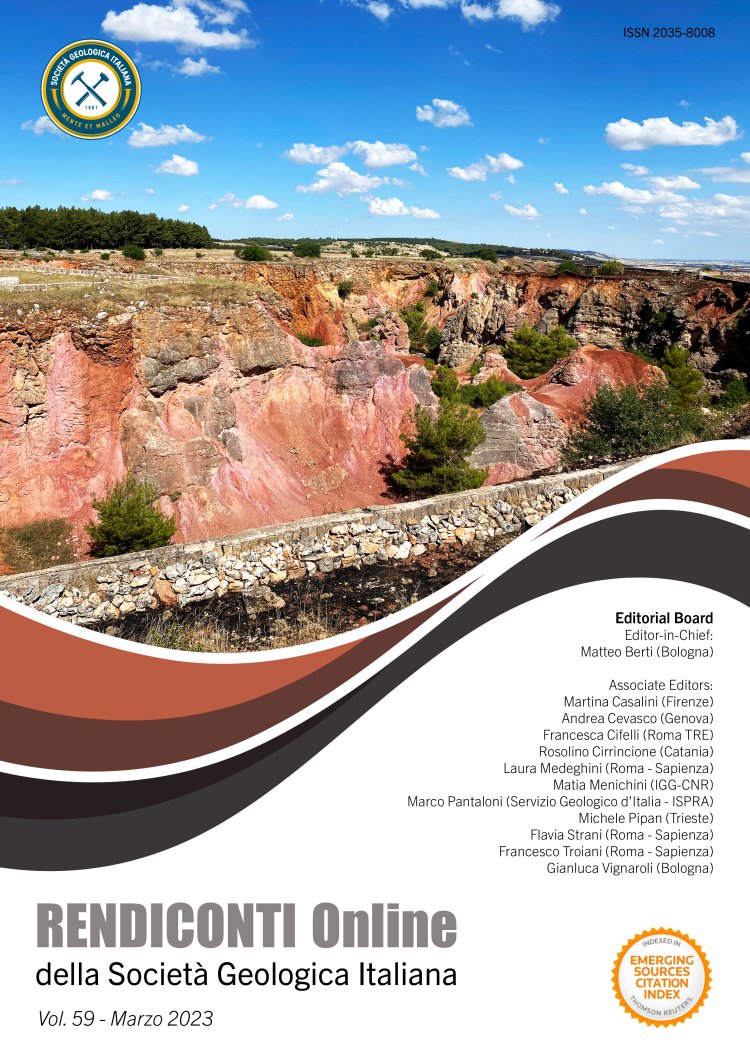
Detrital modes of buried Permian sandstones of the Puglia 1 well (Puglia Region, Southern Italy)
Sara Criniti1
1Dipartimento di Ingegneria dell'Ambiente, Università della Calabria, 87036 Arcavacata di Rende (CS), Italy.
Corresponding author e-mail: sara.criniti@unical.it
Volume: 59/2023
Pages: 119-124
Abstract
Permian siliciclastic input, around Mediterranean region, recorded a frame of Pangaea supercontinent breakup. Apulia region had registered it in a sedimentary cycle during final Paleotethys closure and subsequent Neotethys opening, after Variscan orogenesis. Here is provided a compositional insight of Permian siliciclastic succession intercepted in an explorative well log, Puglia 1 well, up to 6110 m till 7070 m in depth, of ENI’s property. The succession, about 760 m in thickness, consists of sandstone, mudstone and breccia. Sandstones are quartzolithic with quartz and metasedimentary lithic fragments abundance, while diagenetic minerals consist of ankerite, dolomite and calcite cements (related to dedolomitization-calcitization processes of the first carbonates), with iron oxides. The resultant provenance is related to eroded Devonian-Carboniferous Variscan orogen, where metasedimentary rocks occur both in Calabria-Peloritani, southern Alps and internal domains of the Circum-Mediterranean orogenic belts.
Keywords
Get Full Text